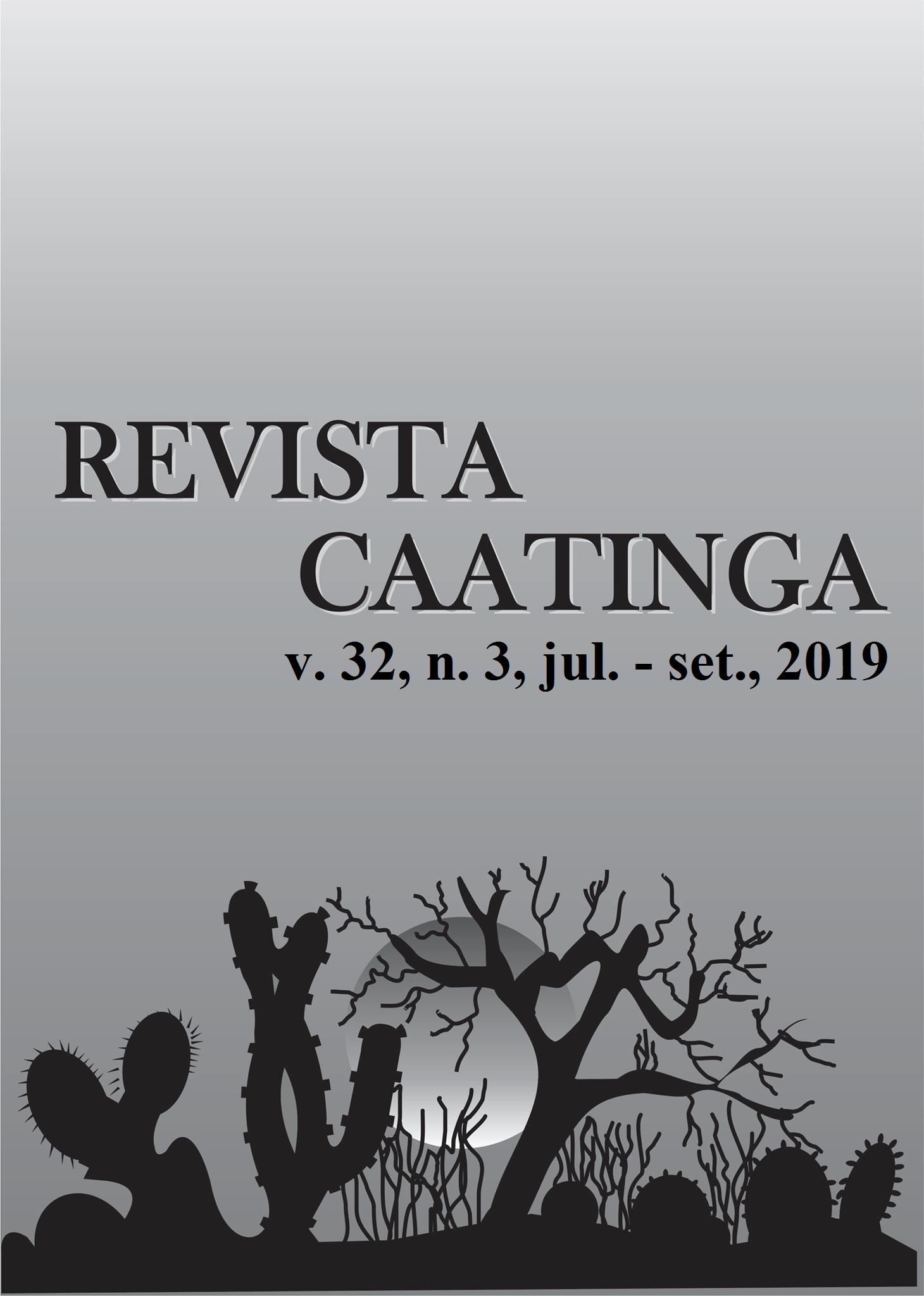SPATIAL VARIABILITY OF THE SATURATED HYDRAULIC CONDUCTIVITY OF SOIL IN COCOA FARMING IN RECÔNCAVO BAIANO
DOI:
https://doi.org/10.1590/1983-21252019v32n323rcKeywords:
Theobroma cacao L. Precision agriculture. Geostatistics. Soil water physical attributes.Abstract
Irrigated cocoa cultivation opened the way for production in Coastal Tablelands soils. However, in this region, the cohesive layer formed near the surface can be a limiting factor for production. The knowledge of physical soil water attributes enables the efficient irrigation management of cohesive soils. This study characterized and modeled the spatial variability of saturated hydraulic conductivity (K0) in a Distrocoeso Oxisoil of the Recôncavo Baiano Coastal Tablelands. The soil sampling was performed as undeformed structures from 50 spaced points in an 8.0 to 8.0 m area, at three different depths in the experimental area of the Federal University of Bahia Recôncavo in the Cruz das Almas–BA cultivated with cocoa (‘CCN 51’). In the laboratory, K0 was determined by permeameter method constant load, and the pore size distribution was determined using the voltage table and the soil density (Ds). Data were analyzed using descriptive statistics and geostatistics. On average, the K0 values were 40.41, 26.49, and 37.82 mm-1 h-1 at the depths from 0.0–0.15 m, 0.15–0.30, and 0.30–0.45 m. The Gaussian model was the best fit to the K0 data set. For soil class, the K0 showed a strong spatial dependence due to their relationship with the physical properties of the soil, its use, and handling. Since an important attribute for the delimitation of homogeneous areas for specific site management purposes as well be considered.
Downloads
Downloads
Published
Issue
Section
License
Os Autores que publicam na Revista Caatinga concordam com os seguintes termos:
a) Os Autores mantêm os direitos autorais e concedem à revista o direito de primeira publicação, com o trabalho simultaneamente licenciado sob a Licença Creative Commons do tipo atribuição CC-BY, para todo o conteúdo do periódico, exceto onde estiver identificado, que permite o compartilhamento do trabalho com reconhecimento da autoria e publicação inicial nesta revista, sem fins comerciais.
b) Os Autores têm autorização para distribuição não-exclusiva da versão do trabalho publicada nesta revista (ex.: publicar em repositório institucional ou como capítulo de livro), com reconhecimento de autoria e publicação inicial nesta revista.
c) Os Autores têm permissão e são estimulados a publicar e distribuir seu trabalho online (ex.: em repositórios institucionais ou na sua página pessoal) a qualquer ponto antes ou durante o processo editorial, já que isso pode gerar alterações produtivas, bem como aumentar o impacto e a citação do trabalho publicado (Veja O Efeito do Acesso Livre).







